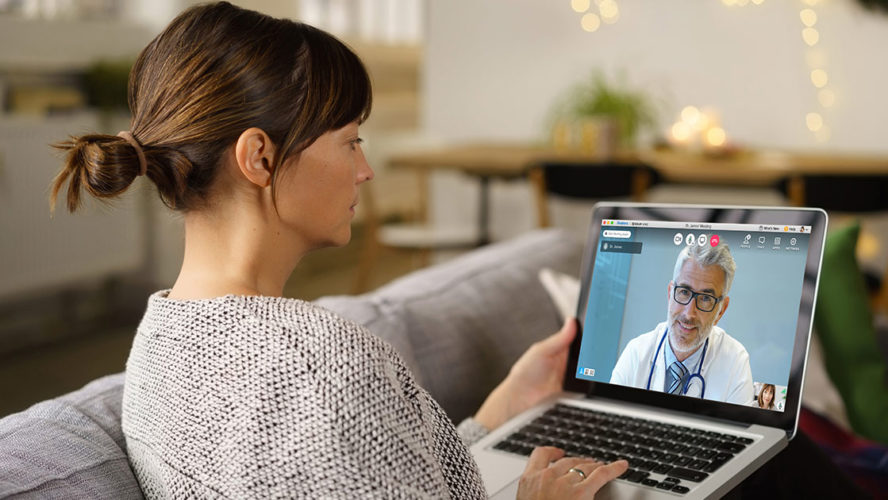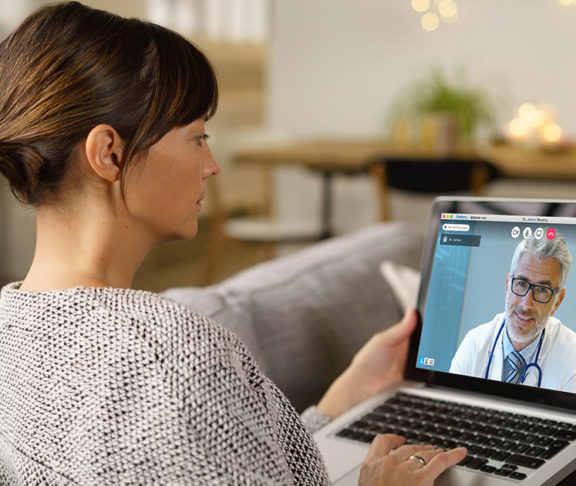The emergence of telehealth during the global pandemic could make healthcare more accessible, safer — and more effective.
Telehealth — receiving medical care and treatment virtually, without an in-person visit — surged during the COVID-19 pandemic. Many patients discovered that telehealth offered distinct advantages over in-person visits. In fact, a recent study conducted by Cleveland Clinic reported that patients were just as satisfied with virtual visits as they were with in-person healthcare.
Now that the pandemic appears to be ebbing, providers face a new challenge. “People are revisiting what was a stopgap solution and asking, how can we adapt this for the future?” says Krish Ramakrishnan, chief of innovation and products at BlueJeans by Verizon, a video collaboration and events company that has developed a next-generation telehealth platform.
Benefits of telehealth
The rise of telehealth during the pandemic underscored its benefits. One important aspect of telehealth is improved patient access, both to those living in remote areas as well as to traditionally underserved or marginalized patients wherever they live.
“Telehealth is a great equalizer,” says David R. Penberthy, M.D., M.B.A., president of the Association of Community Cancer Centers. “Especially for patients with cancer who live in remote or rural locations and now have access to remotely-located specialists, like dietitians, and services, such as genetic counseling, via virtual appointments.”
Removing the need to travel not only removes logistical challenges and the expense of travel, it also results in improved care. “Think about a brick and mortar visit,” suggests Ramakrishnan. “It takes a lot of planning, it takes a lot of effort. What’s more convenient than something that’s done at your own home? You’re more relaxed, your blood pressure is not elevated. In a lot of scenarios, the initial screening is better with telehealth.”
The low cost and convenience of telehealth also results in more proactive healthcare, because patients don’t need to overcome the traditional obstacles associated with seeing a healthcare professional, such as waiting on hold for long periods to schedule a visit. Especially when you consider the elderly and those with advanced stages of varying diseases, a visit to a doctor’s office can be an all-day, physically and psychologically-draining experience.
Telehealth, coupled with personal and in-home patient monitoring devices, gives providers increased, continual access to patient data, allowing providers to build a 360-degree view of the patient more easily.
Telehealth services, like BlueJeans Telehealth, also helps keep those with underlying health risks safer, while still giving them access to healthcare providers. “Telehealth has become vitally important to facilitating care,” notes Dr. Penberthy. “While the rest of the world gets vaccinated and the threat of COVID-19 wanes, immunocompromised patients, like those with cancer, remain at great risk. Virtual visits, wearables that allow remote patient monitoring, and technology that allows patients with cancer to receive care from the safety of their homes is a game-changer.”
Revolutionizing healthcare
A major obstacle to telehealth adoption and development was removed during the pandemic when federal and state governments introduced payer parity, and Medicare introduced billing codes for telehealth sessions. Suddenly telehealth visits were reimbursed at the same rate as in-person visits — and many jurisdictions are making the change permanent.
Ramakrishnan believes telehealth solutions, such as the one BlueJeans has developed, offer the opportunity to revolutionize healthcare in many ways. “That’s the needle-mover, in my opinion,” he says. “Over the long haul, healthcare will no longer be geographically dependent. You may be living in New York City, while your specialist may be in Connecticut. Why can’t you have a telehealth solution? Telehealth has the potential to provide world-class medicine to everybody, everywhere in the world.”
Looking toward the future, as telehealth becomes a universally accepted form of healthcare, homes will become their own personal medical clinic, with consumers increasingly using internet-connected remote patient monitoring devices that automatically collect and send data to their healthcare providers. When vital signs indicate anomalies, providers will be able to automatically conduct a telehealth visit to virtually examine the patient.
BlueJeans intends to be part of this revolution. “When we started in this area,” notes Ramakrishnan, “we asked ourselves, how can we make this so seamless that people would have a world-class experience? Our telehealth motto is ‘Better than being there.’ That’s our North Star.”
For more information about BlueJeans’ telehealth platform, click here.


